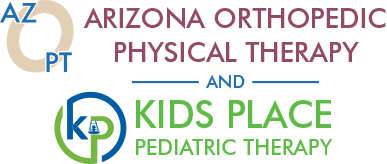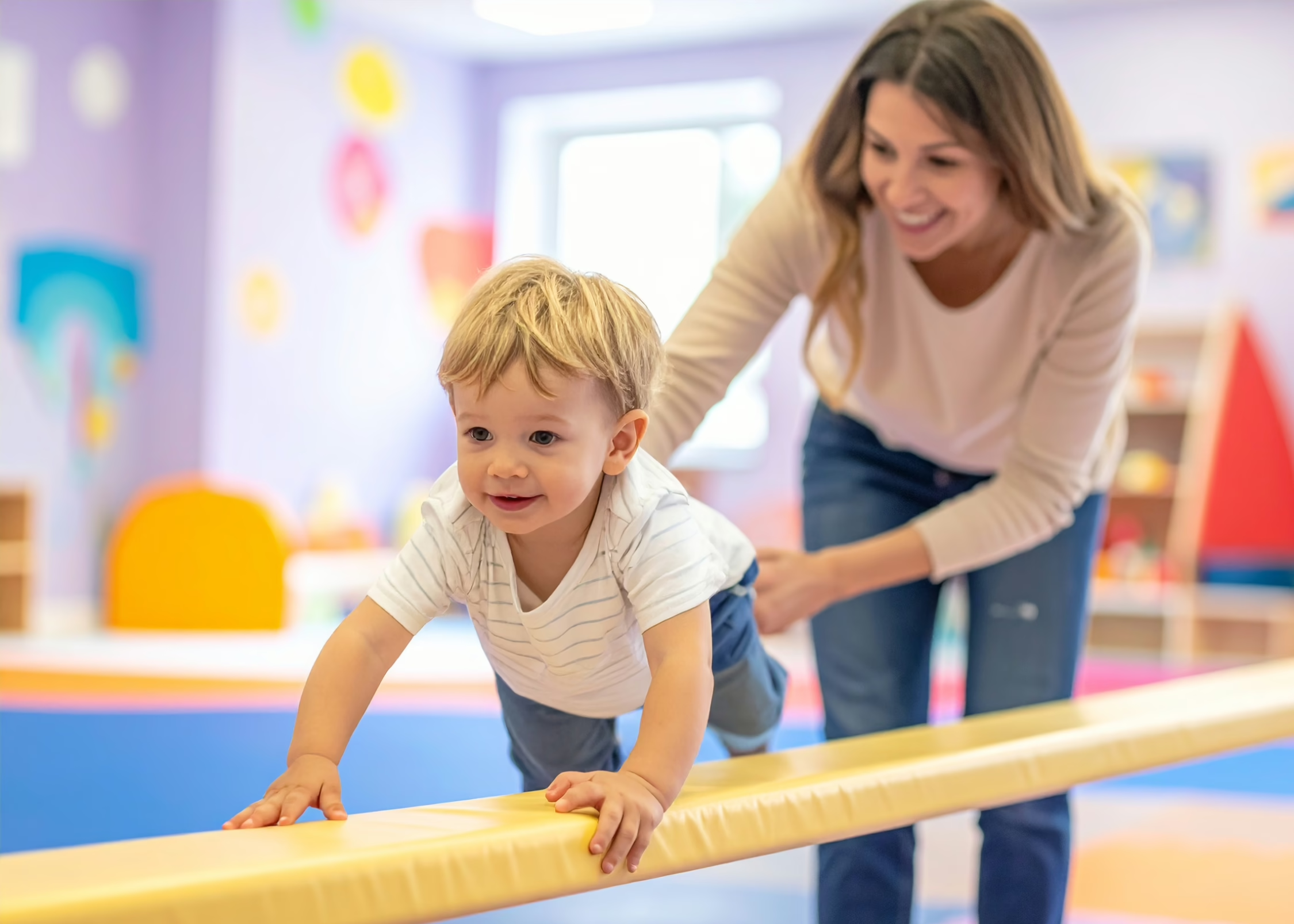As a parent or caregiver you may be questioning, “Why is my child’s therapist working on crawling when they can walk?” Or, “Why are we working on core strength when I am concerned my child is toe-walking?”
The Role of Physical Therapists in Child Development
As physical therapists our job is to examine and evaluate your child’s movement patterns. Often toe-walking did not just begin when your child started to walk. Similarly, asymmetries in strength or a delay in gross motor development often stem from infancy.
In order to develop complex movement patterns such as walking, running, or jumping we have to first develop simple and foundational skills. Without these foundational skills being developed we often see compensatory strategies form in our movements.
Why Crawling Matters for Gross Motor Development
Gross motor skills such as walking require coordination and strength of not only your legs, but your core and arms as well. Crawling also requires the coordination of these muscle groups as seen in this photo.
If a child skipped crawling they often have found compensatory strategies such as not utilizing their core or engaging their hips. This can lead to toe-walking or various other compensation patterns such as in-toeing.
Furthermore, if your child began crawling with a hitch pattern or the use of one leg to pull forwards at their side, they were not activating one side of their body. This can lead to difficulty while developing more advanced gross motor skills such as navigating obstacles, running, or jumping.
Common compensation patterns include:
-
Jumping with increased push off from one foot
-
Putting weight through only one foot when using the stairs
If these skills are not met, then inability to complete gross motor skills requiring more bilateral coordination — such as skipping or dribbling a ball with the feet — are often seen.
Why Therapists Work on Sitting and Core Stability
Another simple skill that therapists often work on is sitting. You may see us put your child on a ball or swing.
The co-contraction of our core and spinal muscles is a key component for balance and our ability to complete both fine and gross motor skills. If we are unable to engage our trunk muscles appropriately, we are unable to stabilize our limbs for more advanced skills such as writing or walking.
Common compensation strategies we observe when a child is unable to engage their core and spinal musculature include:
-
Slouched posture
-
Preference for W-sitting
-
Using one hand to hold themselves upright on unstable surfaces
Building Blocks for Advanced Skill Development
In addition to ensuring the building blocks are in place for more advanced skill development, there are many other reasons to practice gross motor milestones that have been met.
We can improve efficiency and safety with movement patterns by working backwards first, which in turn prevents injuries. If we only utilize one leg to do the majority of the work as we play or navigate our environment, we are at an increased risk for overuse injuries and future surgeries.
We can celebrate small successes by breaking down a skill into smaller components so that it is less daunting and improves overall motivation.
If you were to be seen following a knee surgery, your physical therapist would not encourage you to start walking during your first session because you were able to walk prior to surgery. You would first need to work on the basics including proper core engagement, hip stabilization, and coordination of weight-shifting before beginning to take steps.
This is exactly what your child and their therapist are working on. We have to reprogram our muscles to activate appropriately in order to ensure continued success with skill development and growth.
When to Seek Guidance About Your Child’s Development
If you are concerned about your child’s development and ensuring they are meeting skills in an efficient manner, you can always go to Pathways.org. This website helps take the guesswork out of baby development.
We as physical therapists love discussing movement, so please seek out an evaluation or ask further questions during treatment sessions as to how you can encourage simple movement patterns while building the foundation for greater motor skill development.







